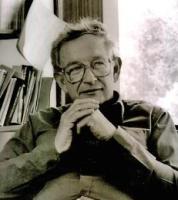| www.tmatlantic.com
Test & Soldering Equipment On-line Store |
|
D.E.V.I.C.E. (Wiki)Calculators Services |
|||||
Filter by first letter
|
Anderson, Philip Warren
Philip Warren Anderson was born on December 13, 1923. He was an American theoretical physicist and Nobel laureate. Anderson made contributions to the theories of localization, antiferromagnetism, symmetry breaking (including a paper in 1962 discussing symmetry breaking in particle physics, leading to the development of the Standard Model around 10 years later), and high-temperature superconductivity, and to the philosophy of science through his writings on emergent phenomena. Philip W. Anderson is also responsible for naming the field of physics that is now known as condensed matter physics. From 1949 to 1984, Anderson was employed by Bell Laboratories in New Jersey, where he worked on a wide variety of problems in condensed matter physics. During this period he developed what is now called Anderson localization and Anderson's theorem, invented the Anderson Hamiltonian, which describes the site-wise interaction of electrons in a transition metal, proposed symmetry breaking within particle physics, created the pseudospin approach to the BCS theory of superconductivity, made seminal studies of non-s-wave pairing (both symmetry-breaking and microscopic mechanism) in the superfluidity of helium-3, and helped found the area of spin-glasses. From 1967 to 1975, Philip Warren Anderson was a professor of theoretical physics at Cambridge. In 1977 Anderson was awarded the Nobel Prize in Physics for his investigations into the electronic structure of magnetic and disordered systems, which allowed for the development of electronic switching and memory devices in computers. Co-researchers Sir Nevill Francis Mott and John van Vleck shared the award with him. In 1982, he was awarded the National Medal of Science. He retired from Bell Labs in 1984 and was Joseph Henry Professor Emeritus of Physics at Princeton University. In 1984, he participated in the founding workshops of the Santa Fe Institute, a multidisciplinary research institute dedicated to the science of complex systems. He died in Princeton, New Jersey, on March 29, 2020, at the age of 96. Citing Wikipedia.org |
Measurement History Events
|
Site mapPrivacy policyTerms of Use & Store PoliciesHow to BuyShippingPayment




|


























